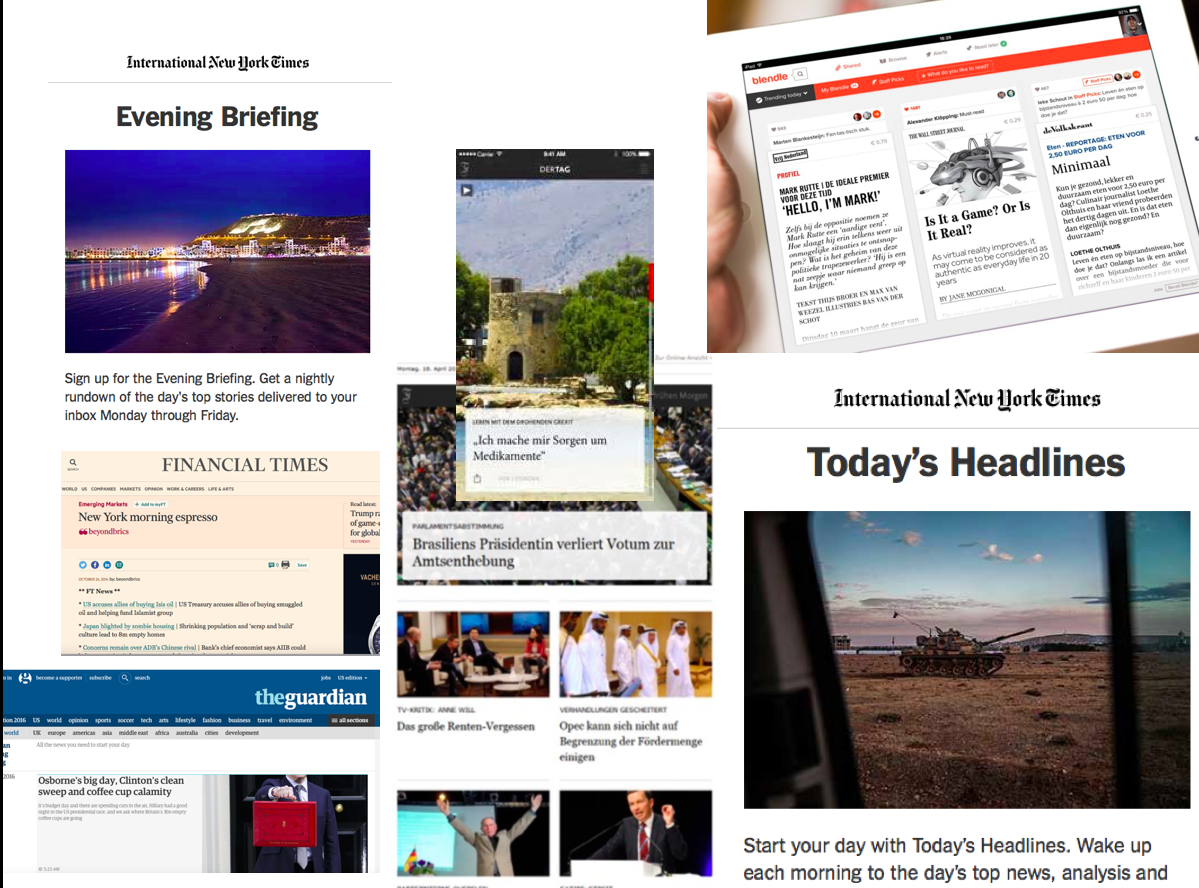This is the weekend edition of TheMarioBlog and will be updated as needed. As I will be on a cruise during the week of our Thanksgiving holiday in the US, the next blog post is Monday, Nov. 28.

As the year 2016 draws to a rapid end, I see that my clients are developing a tremendous interest in newsletters and briefings, which have been around for a while, but that never took off with the zest they should have.
I myself get various news briefings daily, with The New York Times, Blendle and Quartz among my favorites. Each of these is quite different:
The New York Times’ briefings are news driven, but surprise with lifestyle content as well.
Blendle curates content from a variety of sources and calls itself “the biggest platform of premium journalism in the country.” Here is a sample story that stopped me: “Decapitate and Chill (Bloomberg Businessweek)—The cryonics enthusiasts of Moscow based KrioRus are freezing heads now, figuring out the whole immortality thing later.”
Quartz is the most interesting in terms of the way it presents its curated material (especially those sharp and often funny headlines) and the number of surprises it offers:
Now a piece from the Nieman Lab authored by Andrew Jack, who is the head of curated content at the Financial Times,brings the topic of newsletters and briefings to the front.
Among Jack’s assertions concerning newsletters and briefings:
—Newsletters are “…akin to “curation”: picking the best gems of news and analysis, and constructing a narrative around them for time-pressed readers drowning in the information overload of the web. And we were forging a direct relationship with our readers.
—What newsletters do: “They add “reach,” drawing in a wider group of prospective readers. The New Yorker says the response is higher from its email newsletters than social media….it is a valuable way to grab attract attention and build a reader habit. “
-Advertising: “Many newsletters contain advertising units and banners such as Red Box. An increasing number have “native ad” or sponsored content messages, such as Quartz’s Daily Brief, The Monocle Minute, and TTSO (Time to Sign Off) in France.”
–Brand awareness. Free newsletters serve as a way to trigger broader interest in a news organization or product, increasing knowledge of the organization and its content, or raising awareness of new and different content or services it is producing.
Dan Oshinsky, director of newsletters at BuzzFeed, is quoted in the article:
“We have always been about telling stories people want to share, so email is such a natural place to start. It’s definitely not the flashiest, newest platform. But it reaches audiences, brings people back to the site, and distributes our content.”
Starting newsletters
I advise my clients to develop newsletters and briefings, and not just for the news. One has to start somewhere, and, in some newsrooms, it is not the news department that is ready, so one can test a newsletter briefing via a lifestyle subject such as food, or wellness.
If new product development is in the cards for 2017 in your newsroom, I would definitely start with a consideration of emailed newsletters and briefings. They are not complicated to set up, as they are 100% templated. But, briefings must have a name and a face: who will be editing the briefing? Sponsorship and/or paid ads should figure prominently from the start.
The best briefings are chatty, embrace the reader with a hug and start from the premise that readers are busy, so the briefings editors are there to curate content and also to make sure that important content, not necessarily that preferred by the reader, are also included.
Briefings and newsletters not only inform, but they educate us and show us content that we must know.